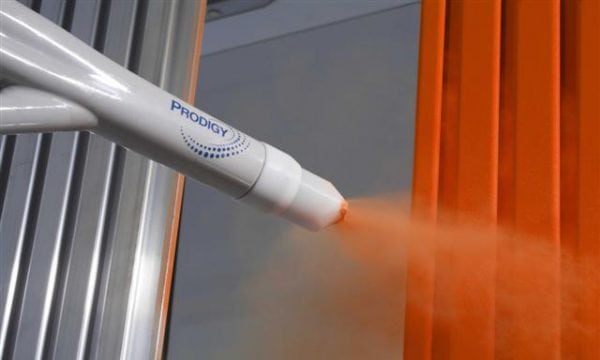There are many requirements for paints and varnishes. They should create a durable and durable coating that will permanently protect the surface from destruction. This is especially true for weather-resistant paint. What are the advantages of such dyes? Why are they used?
Description and properties
Usually weatherproof paints are made of three components:
- a binder;
- filler;
- pigment.
The first ingredient is responsible for the strength of the finished coating and for the price of the paint itself. The cheaper it is, the less in the composition of the binder.
The coating formed by this type of paints and varnishes protects metal, wood and any other surface from atmospheric influences. Here is some of them:
- oxidative processes occurring due to metal contact with oxygen;
- high humidity and precipitation;
- solar radiation;
- the influence of sunlight and daylight;
- high temperatures;
- air pollution that can cause surface damage.
Weather-resistant paint for metal, as well as facade paint, have several distinctive features that distinguish them from the list of similar paints:
- Resistance to exposure to sunlight. The finished coating, even with a long stay on the street, will not lose its presentable appearance and properties.
- Weather resistant. The painted surface can easily withstand sudden changes in temperature, tested by wind, rain, etc.
- Vapor permeability. Despite the strength and density of the coating, it easily passes moisture. This is a very important property, since the accumulation of fluid can provoke structural failure.
- Moisture permeability. The coating freely lets steam through, but does not allow liquid to pass through. Moreover, it prevents its accumulation. Due to this, fungus and mold do not form inside the structure or building.
- Abrasion resistance. Weatherproof paint is almost always affected by external factors. The durability of the coating depends on its resistance to these factors. Abrasion resistance is usually indicated on the packaging and measured in cycles. The more abrasion cycles a coating can carry, the better the dye.
- Drying time. The faster the paint dries, the less harm it will bring to the person who causes it and the environment. This parameter is displayed on the packaging in two digits. The first shows how much time should pass before applying the second layer, and the second shows the total drying time.
to contents ↑
Varieties of material
Weatherproof paints come in several forms. From each other, they differ in composition and basic properties.
Organosilicon agents are considered the most affordable. They cope well with direct sunlight, pass steam well and retain moisture.Such dyes can be used even at subzero temperatures. The main scope of their application is the construction of new facilities, restoration and repair work. They cover metal structures, plastered, concrete and brick walls. The use of weather-resistant paints during operation extends the life of the object several times.
Acrylic weather-resistant facade paint is considered equally popular. Such a tool is recommended to be used on surfaces made of mineral materials, since good vapor permeability and resistance to moisture are very important for them.
The most important properties of acrylic compositions include:
- resistance to abrasion in conditions of high humidity;
- good adhesion (bonding to the surface);
- resistance to change in weather conditions.
Usually paints are white. However, with the help of special colors, you can give them the necessary shade.
to contents ↑Workflow Features
Weatherproof paint, like any other, should not be applied to an unprepared surface. In order for the coating to be durable and beautiful, it is necessary to act strictly according to the instructions:
- To clear a surface of a layer of old paint, of pollution, dust, etc.
- If it is a facade, in some cases the surface needs to be strengthened.
- Take care to eliminate defects, such as cracks.
- If necessary, plaster or apply a primer.
- The last step is staining. Paint can be applied with a brush, roller, spray.
Safety precautions
As with any other work, when painting the facade, metal or other structures, safety precautions must be followed. There are several recommendations on this subject:
- It is important to use only a working tool.
- Before work, it is advisable to protect the head, eyes and respiratory system. It is better to wear overalls. From shoes you should choose the one with a thick and non-slip sole. This is especially true for those cases when you need to paint the facade.
- If in the process of painting the facade it is necessary to work at height, it is good to take care of safety equipment.
Weatherproof paint is an ideal solution for painting facades or structures on the street. It can be called a universal dye, since it is used to work with almost any surface.









